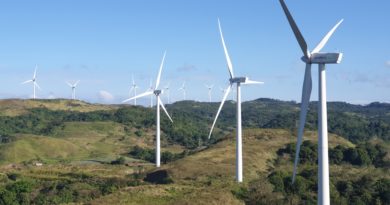Preferences of property buyers are changing: real estate execs
Lamudi’s recently concluded online roundtable, New Behaviors, New Demands: What Matters to Homebuyers Now, brought together property experts to discuss the drastic changes in the preferences of property buyers today, highlighting how the pandemic introduced a new normal lifestyle.
The first of two tracks explored current market demands and priorities, featuring a panel of distinguished thought leaders. The second segment was a one-on-one interview, which tackled sustainable developments and lifestyle and community responses to the pandemic.
What Buyers Want
The first part of the online roundtable discussion, New Rules: Lifestyle Changes to Prepare for, featured Markus Nisula, Managing Director of KONE Philippines; May Lopez, Vice President and Business Unit Head of I-Land; Elizabeth Ventura, President of Anchor Land Holdings, Inc.; Felimon Yee, Jr., Vice President for Business Development and Customer Turnover of DataLand, Inc.; and Jenna Belardo, AVP and Business Unit Head for Property Sales of Ortigas Land.
From the get-go, the leaders agreed that convenience, space, and comfort have influenced the market’s investment decisions.
Taking note of trends, Belardo said that estates have been more popular recently.
“At the onset of the pandemic, we see the preference of the market wanting to live in a self-contained community because they want convenient access to their daily needs, like going to the groceries, drugstores, food outlets, and of course, quality healthcare facilities,” she mentioned.
She likewise noted that more property buyers prefer larger balconies in their homes, especially the ones living in condos. Extra space outdoors without necessarily stepping outside of the home is a must-have during quarantine periods.
On top of the convenience and availability of more space, recreation has emerged as important for buyers. Yee noted great interest in the amenities that a residential community offers.
“Some of the buyers are into having more amenities and enjoying themselves while living in a condo set-up,” he pointed out.
Ventura echoed these sentiments, noting that more of their clients have been interested in facilities featured in properties abroad.
“The market behavior of the Binondo area is always going upscale and upscale,” she said.
Ventura added, “They always demand for better living conditions, not just on the space, but also the amenities, [which] answer for what is globally acceptable, as these buyers are globally exposed to luxury products.”
How Developers Respond to Modern Demands
Given the new lifestyle demands and buyer preferences, the panelists shared that they have been more conscious of how their projects support market priorities. For Nisula, innovative services are crucial.
Harping on technology, he talked about the smart elevator solutions their company is offering. He said, “When we think about smart buildings, usually the first thing that comes to mind is everything needs to be digital.
“This latest generation of elevators we are launching this year, yes, they are digital and connected, but they also have smart materials. We have next-generation materials that are self-healing. If you make a scratch there, it heals. They’re also anti-bacterial.”
Lopez, meanwhile, emphasized sustainability in future-proofing. In their case, they prioritize sustainability in the now. “We better take care of the environment. We make sure that our projects support that,” she said.
From construction to maintenance, their company complies with green building standards, focusing on human-centered design. She mentioned, “The three buzzwords there will be health, well-being, and comfort.”
What Green Buildings Are
Green buildings emerged as one of the key topics in the second track of the roundtable discussion, New Essentials: Sustainability as the Community Spotlight, where Lamudi CEO Kenneth Stern interviewed SM Development Corporation’s (SMDC) President Jose Mari Banzon. Talking about green buildings, the latter shared that the company follows the book on green buildings to reduce their carbon footprint.
Banzon emphasized the systems they have in place for harvesting rainwater in developments. Inside the units, eco-friendly LED lights are available for use.
The strategic location of their developments reduces the need for private vehicles. “We’re always next to malls or schools or transportation hubs. You rarely have to use your car,” Banzon mentioned.
Similar to the developers in the panel, SMDC is keen on building future-proof buildings. In the rise of remote work arrangement, Banzon said that they’re including co-working areas inside residential communities.
The two-part virtual roundtable discussion is sponsored by KONE, Subdivision and Housing Division Association, Inc., and the official broadcast media partner, ANC.




